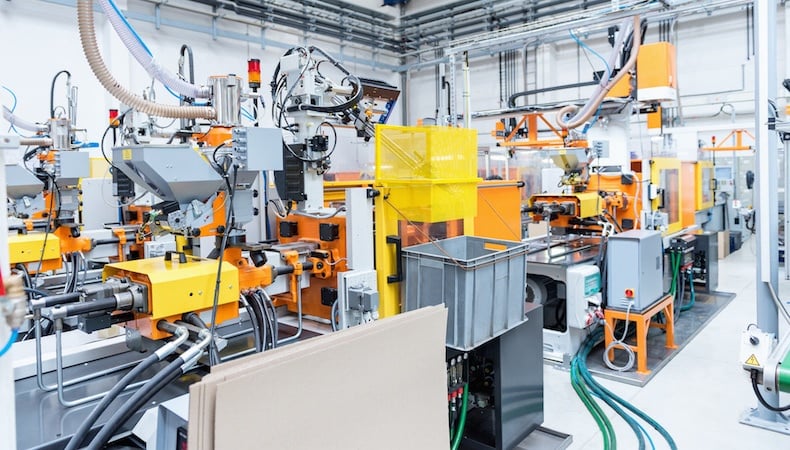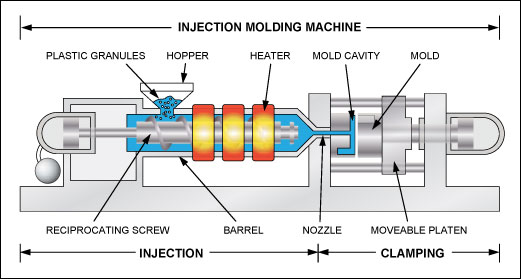The Future of Plastic Shot Molding: Technologies and patterns to Watch
As the plastic shot molding industry advances, several key trends are emerging that pledge to improve its landscape. Automation and smart production strategies are established to boost productivity, while the shift in the direction of lasting products mirrors a growing environmental awareness. Advancements in 3D printing are paving the means for unprecedented design adaptability. These advancements likewise bring forth difficulties that need cautious consideration. Understanding how these components will certainly communicate and influence future methods is important for stakeholders aiming to browse this transformative duration efficiently.
Automation and Smart Manufacturing
As the plastic injection molding sector progresses, automation and clever production are taking center stage, transforming production procedures - Plastic Injection Molding. The integration of advanced modern technologies such as robotics, IoT (Internet of Points), and artificial knowledge is enabling suppliers to enhance effectiveness, lower functional prices, and boost item high quality. Automated systems improve process, lessening hand-operated treatment and raising throughput, which is important in meeting the increasing demand for rapid manufacturing cycles
Smart producing innovations promote real-time tracking and information analysis, enabling companies to enhance machine efficiency and predict maintenance needs. This proactive approach not only lessens downtime however additionally expands the life-span of equipment. The use of collective robots, or cobots, boosts the flexibility of production lines, enabling devices and employees to run side by side safely and successfully.
The adoption of automation in plastic shot molding is not simply a fad but a strategic crucial for businesses intending to stay competitive in a worldwide market. By using these modern technologies, producers can attain higher precision, reduce waste, and adjust quickly to altering customer needs, positioning themselves for lasting development in a significantly automatic future.
Sustainable Products and Practices
The press in the direction of automation and wise production has led the way for a greater emphasis on sustainable products and practices within the plastic injection molding industry. Business are significantly looking for eco-friendly alternatives to standard petroleum-based plastics, causing the fostering of recycled and bio-based products. These sustainable products not just lower environmental effect but additionally line up with customer need for greener products.

Additionally, collaboration between suppliers, product vendors, and ecological organizations is cultivating advancement in the development of lasting materials that satisfy efficiency requirements without jeopardizing top quality. As guidelines around plastic usage come to be stricter, the sector is positioned to adjust by embracing these sustainable techniques, making certain lasting stability and lowering reliance on non-renewable sources. The combination of sustainability right into plastic injection molding is not just a trend; it is ending up being a necessary part of corporate responsibility and operational quality.
Advances in 3D Printing
Recent advancements in 3D printing innovation are dramatically changing the landscape of plastic shot molding. The assimilation of additive production procedures enables the rapid prototyping of complex geometries that were impossible or when difficult to attain via traditional methods - Plastic Injection Molding. This capability not only accelerates item growth cycles yet also lowers product waste, aligning with the expanding demand for sustainable manufacturing techniques
In addition, the appearance of crossbreed production methods, which combine 3D printing and injection molding, offers suppliers the capability to produce complex layouts while preserving the performance of automation. This method makes it possible for the manufacturing of tailored parts tailored to specific client requirements without sacrificing the speed and scalability check that that injection molding supplies.
In addition, innovations in products, such as high-performance polymers and composites particularly designed for 3D printing, are enhancing the useful capacities of printed parts. These materials can withstand higher anxiety and exhibit enhanced thermal homes, making them ideal for even more requiring applications.
As 3D printing remains to evolve, its integration into plastic shot molding procedures promises to linked here improve performance, minimize costs, and foster advancement in product design, placing manufacturers to better meet the challenges of an open market.
Data Analytics and IoT Assimilation
Information analytics and the assimilation of the Internet of Things (IoT) are reinventing plastic shot molding by giving suppliers with unprecedented understandings into their procedures. By leveraging real-time information collected from interconnected equipments and sensors, suppliers can keep track of performance metrics, determine inadequacies, and maximize manufacturing procedures. This data-driven method promotes predictive upkeep, minimizing downtime and expanding equipment life expectancy.
Furthermore, IoT integration enables improved quality assurance. By continually tracking variables such as cycle, stress, and temperature level times, manufacturers can quickly spot deviations from developed parameters and make adjustments in real time. This not just improves product uniformity however likewise decreases waste and scrap prices.
The fusion of data analytics and IoT innovations additionally equips manufacturers to take on more nimble production strategies. With access to comprehensive data analytics, organizations can react to market needs with greater flexibility, readjusting manufacturing schedules and configurations as required. This versatility is necessary in a swiftly altering production landscape.

Modification and Design Flexibility
Exactly how can modification and layout adaptability improve the competitiveness of plastic injection molding? Modification permits producers to meet specific client demands, suiting distinct dimensions, shapes, and functionalities that basic items might not fulfill.
Developments in style innovations, such as computer-aided design (CAD) and rapid prototyping, additional boost this trend. These devices allow developers to create complex patterns and complicated geometries, which can be seamlessly incorporated into the production procedure. Therefore, producers can respond quickly to altering consumer choices and market needs.
Furthermore, the execution of modular tooling systems improves design flexibility, permitting for quicker changes in between various item designs without comprehensive downtime. This versatility can result in lowered preparations and lower production additional resources expenses, making firms more competitive and active. Inevitably, accepting personalization and design flexibility in plastic injection molding not only boosts product offerings yet also enhances market positioning in an ever-evolving landscape.
Verdict
The future of plastic shot molding is defined by substantial innovations in automation, sustainable techniques, and ingenious materials. The integration of IoT and data analytics will enhance functional performance and anticipating maintenance. The adoption of recycled and bio-based materials, along with development in 3D printing, will certainly cultivate sustainability within the industry. Modification through modular tooling and fast prototyping will certainly enable makers to stay affordable and receptive to the dynamic demands of the market.

The future of plastic injection molding is characterized by significant developments in automation, lasting methods, and ingenious products.
Comments on “Discovering the Future of Plastic Injection Molding in the Manufacturing Industry”